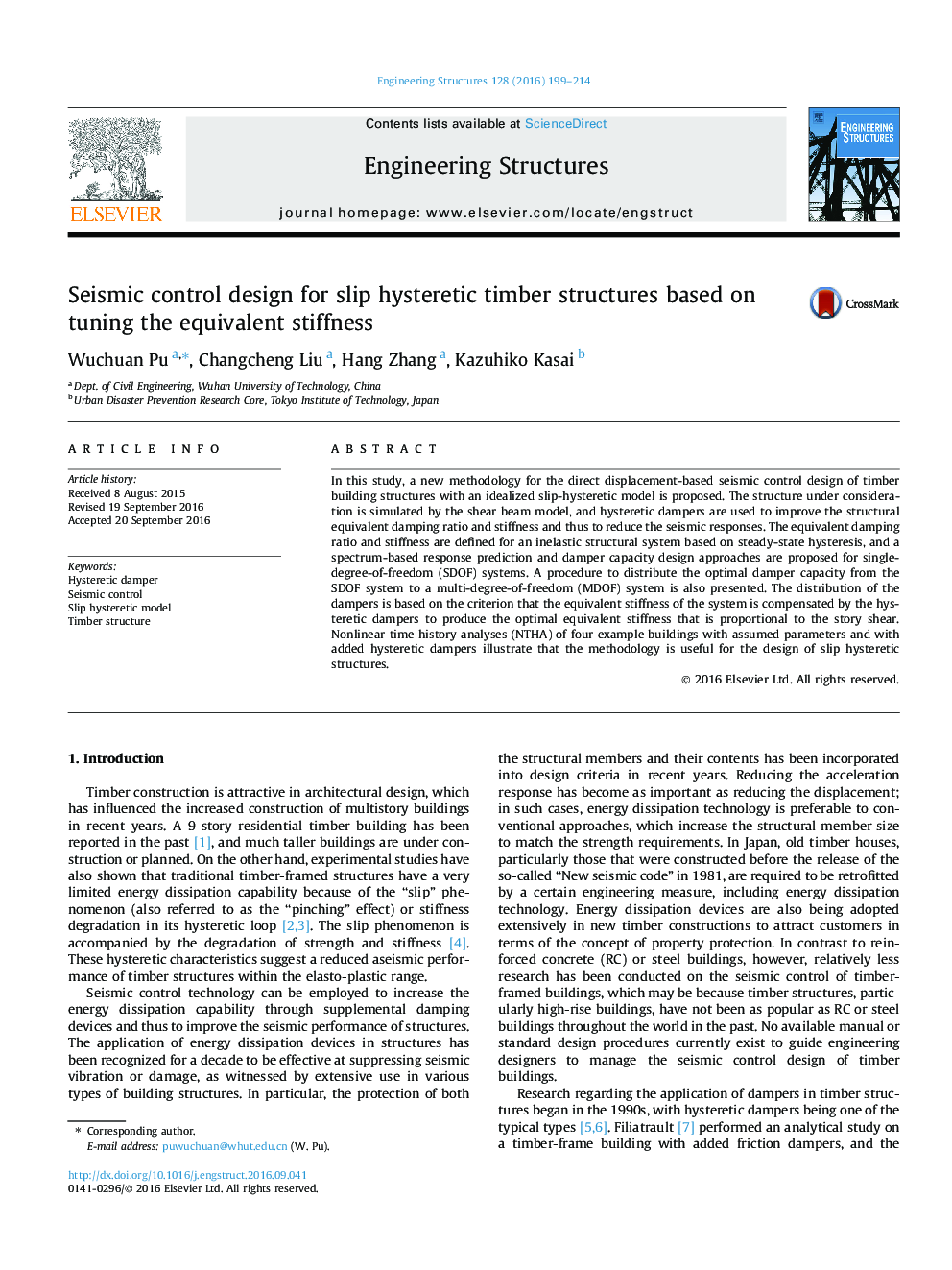| Article ID | Journal | Published Year | Pages | File Type |
|---|---|---|---|---|
| 4920721 | Engineering Structures | 2016 | 16 Pages |
Abstract
In this study, a new methodology for the direct displacement-based seismic control design of timber building structures with an idealized slip-hysteretic model is proposed. The structure under consideration is simulated by the shear beam model, and hysteretic dampers are used to improve the structural equivalent damping ratio and stiffness and thus to reduce the seismic responses. The equivalent damping ratio and stiffness are defined for an inelastic structural system based on steady-state hysteresis, and a spectrum-based response prediction and damper capacity design approaches are proposed for single-degree-of-freedom (SDOF) systems. A procedure to distribute the optimal damper capacity from the SDOF system to a multi-degree-of-freedom (MDOF) system is also presented. The distribution of the dampers is based on the criterion that the equivalent stiffness of the system is compensated by the hysteretic dampers to produce the optimal equivalent stiffness that is proportional to the story shear. Nonlinear time history analyses (NTHA) of four example buildings with assumed parameters and with added hysteretic dampers illustrate that the methodology is useful for the design of slip hysteretic structures.
Related Topics
Physical Sciences and Engineering
Earth and Planetary Sciences
Geotechnical Engineering and Engineering Geology
Authors
Wuchuan Pu, Changcheng Liu, Hang Zhang, Kazuhiko Kasai,
